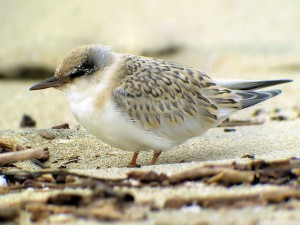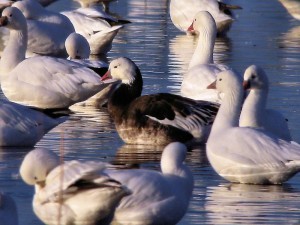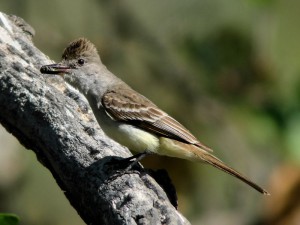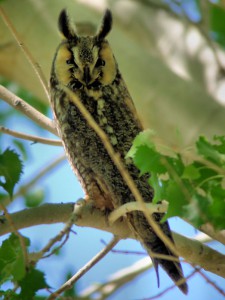We went out to San Jacinto Wildlife Area looking for the Gyrfalcon… again. We went prepared with hot drinks, hats and gloves to keep from freezing. In that, we were mostly successful, but in finding the jeer-falcon, not so much. The greater San Jacinto Wildlife Area has had a fabulous winter for raptors. In addition to the ‘mythical’ Gyrfalcon, the four basic falcons, American Kestrel, Merlin, Prairie and Peregrine were all present. Everywhere we looked,we found either a Northern Harrier or a White-tailed Kite. Red-tails seemingly outnumbered even American Crows.
Along Gilman Springs Road was an overwintering dark-phase Swainson’s Hawk that was rather shy. The fields around Alessandro and Davis Roads harbored many Ferruginous Hawks, including several dark-phase birds. We saw quite a few along with both Bald and Golden Eagles. At least two Rough-legged Hawks wintered there that year. Even a Harlan’s Hawk (not a common morph in California) regularly hung out there. Both Cooper’s and Sharp-shinned Hawks were also present, and if you hung around until evening, it wasn’t hard to find 3-4 Short-eared Owls flying over the marshes along Bridge Street. Other birders alerted us this Burrowing Owl hunkered down right next to the levy road. Evidently, it did not want to see us!
San Jacinto Wildlife Area Regulars
After two or three hours of watching, we packed it in to go look for other birds. Down by San Jacinto Creek, we found a small flock of Mountain Bluebirds. Not a rare bird here, but certainly a pretty one. Further up Davis Road in an area of dry grasslands and sage chaparral, we found hundreds of sparrows. These included many White-crowned Sparrow, a few bright Savannah Sparrows and the occasional Vesper Sparrow mixed in. Canyon and Rock Wrens were both singing from the tops of boulders along Davis Road and a distant Greater Roadrunner was moaning out his love song from further away.
Dozens of Sage Thrashers
The real star of the show up there was the Sage Thrashers. When we first heard reports of upwards of 30 thrashers in that location, it didn’t sound real. But there they were! Everywhere! For a while, we had half a dozen sitting on fence posts like meadowlarks. Others ran around like robins in the grass behind them. We watched more than a dozen right in front of us. Meanwhile others sang from perches in the sage behind us. It was really spectacular!
We took these photos with a Nikon CoolPix P300 digital camera attached to a Kowa TSN-883 spotting scope, using a Vortex PS-100 adapter attached to a Kowa TSN-DA10


























